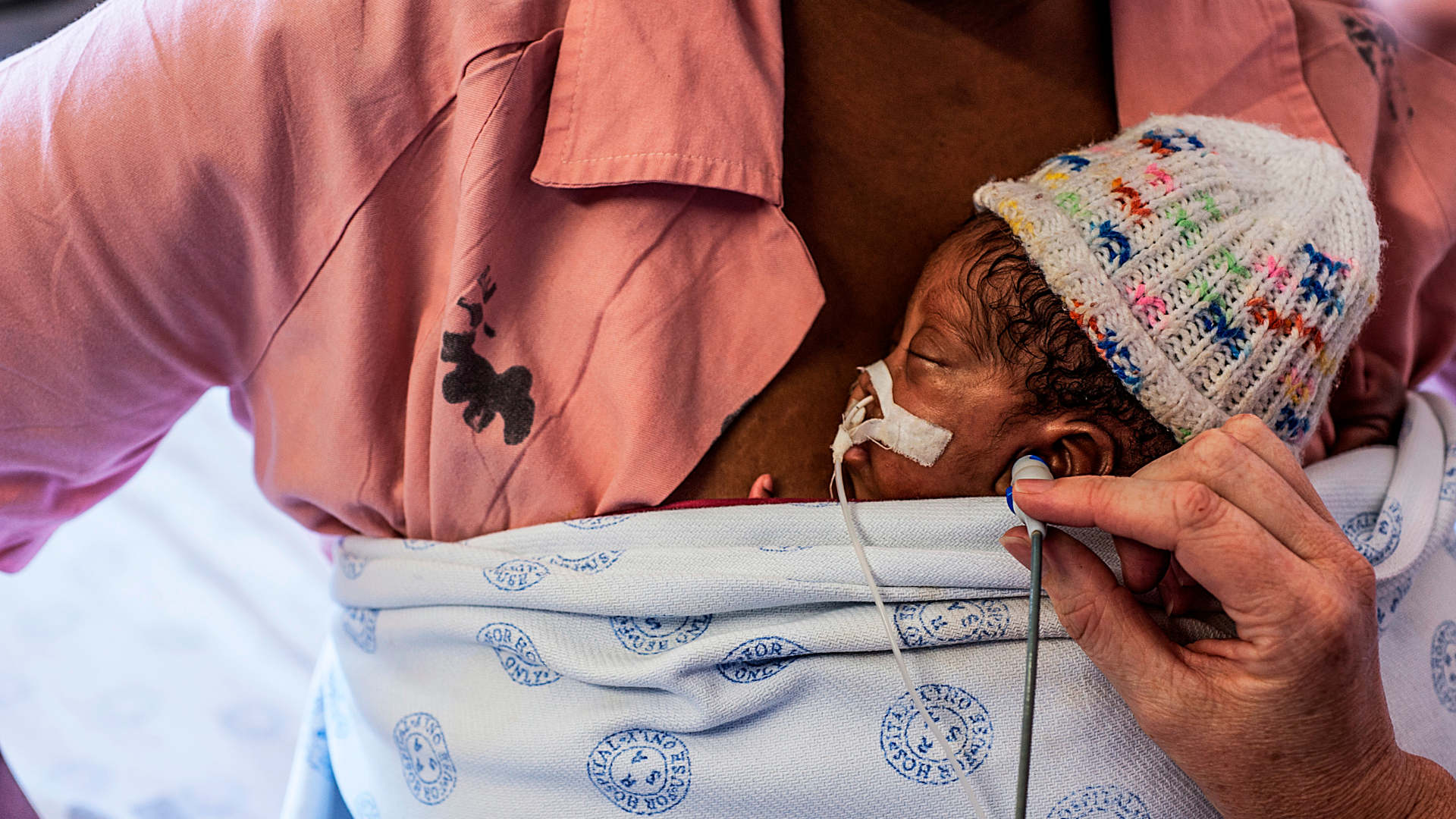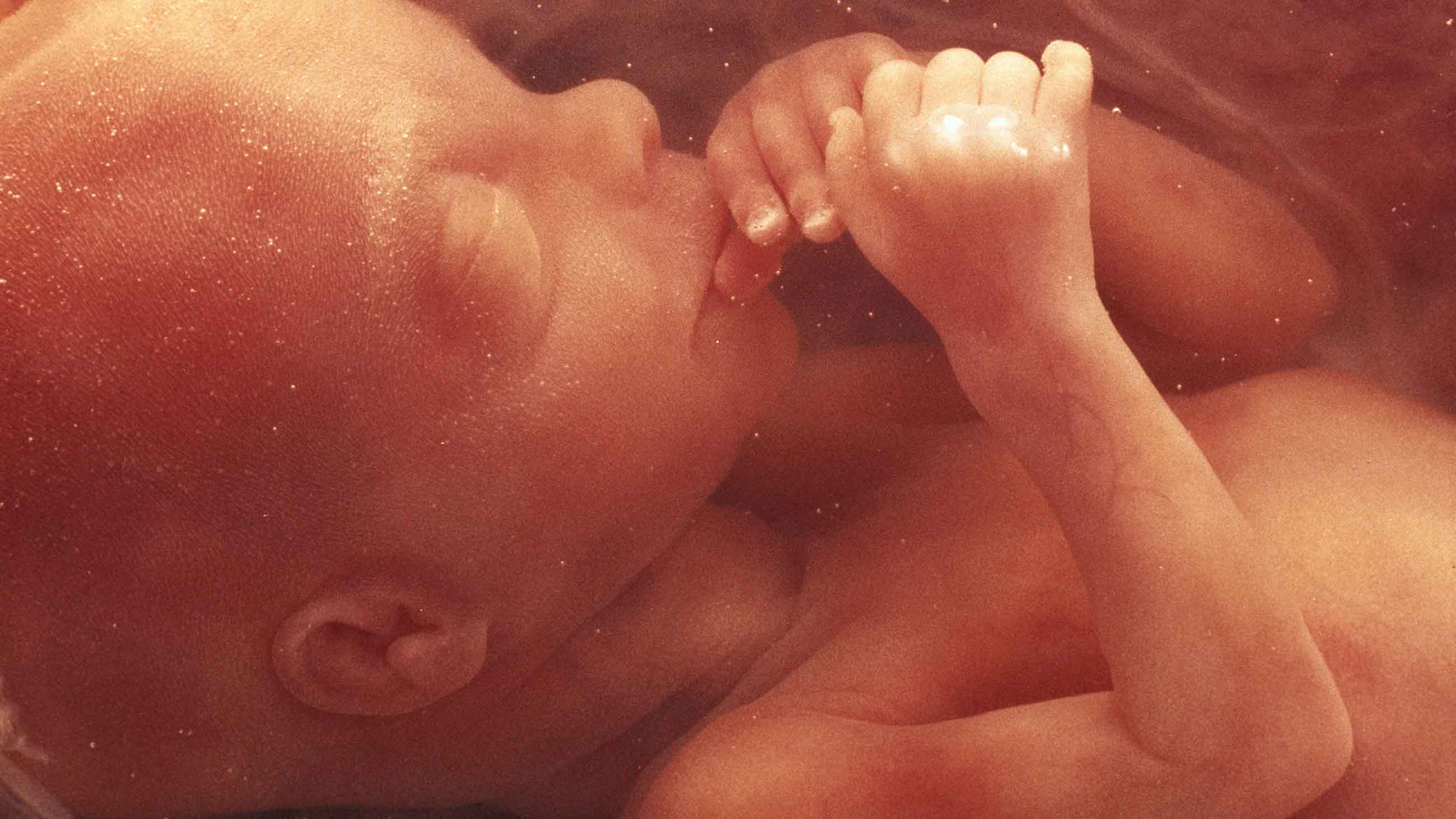Despite the technological and economic leadership of the U.S., outcomes for America’s newborns are the worst among the 38 member countries in the Organization for Economic Cooperation and Development, including Canada and those in most of Western Europe. In particular, about 10 percent of infants in the U.S. are born preterm (before 37 weeks of pregnancy), putting them at increased risk of early death, disease, and disability throughout their lives. Infant mortality, which had decreased over the past two decades, rose 3 percent from 2021 to 2022. Black and Native American babies, whose mortality rate is at least double that of White infants, suffer disproportionately.
However, there is a proven, low-cost method that could substantially reduce these tragic infant deaths: prolonged skin-to-skin contact between parents and infants. Recent studies have demonstrated that this technique, often referred to as kangaroo mother care, or KMC, saves more lives than neonatal incubators while improving long-term health outcomes — even for extremely premature infants born prior to 28 weeks gestation. In 2022, the World Health Organization changed its guidelines for all preterm and low birth-weight infants to receive prolonged KMC (8 to 24 hours per day), starting immediately after birth. This requires treating the mother and baby together as an inseparable unit.
For much of human history, skin-to-skin care of infants was the default. Infants were strapped, upright by means of a shawl or inside clothing, to the mother’s naked back or chest all day as she went about her tasks. At night, they slept next to their mothers for warmth and ease of breastfeeding. Our modern adoption of other methods of infant care, and particularly the practice of parent-infant separation and use of incubators in hospitals, is a story of good intentions gone awry.
Neonatal incubators were developed in late 19th-century France, where a doctor battling high infant mortality designed them (based on chicken incubators) to assist mothers and nurses caring for low birth-weight infants. Subsequent versions designed in the U.S., sometimes billed as “artificial wombs,” also included oxygen delivery.
Recent studies have demonstrated that this technique, often referred to as kangaroo mother care, or KMC, saves more lives than neonatal incubators while improving long-term health outcomes.
Incubators became the standard of care for preterm infants after the Second World War, saving the lives of many fragile newborns, but they, alongside related interventions, sometimes caused tragic lifelong morbidities including blindness, lung damage, and neurological disabilities. Medical professionals took over the care of preemies almost completely. While the practice of isolating newborns from their parents began to decline in the 1970s, with gradual improvements in the 1980s and 1990s, parental access to preterm infants remains limited. The U.S. standard treatment, known as conventional care, is still to separate preterm and low birth-weight infants from their parents and use neonatal incubators or warmers. Hospitals may now encourage parents to provide skin-to-skin contact for a few hours as an optional supplement.
Even as hospital births and separation of newborns from mothers became standard, a different group of researchers were reporting findings that contraindicated this practice.
In 1978, difficult conditions at a hospital in Bogotá, Colombia, led to one of the first (albeit impromptu) large-scale trials of KMC. Faced with an overcrowded neonatal unit and high infant mortality, two local physicians trained parents to warm babies with 24 hour skin-to-skin contact and practice exclusive breastfeeding. The results were striking: infant mortality dropped precipitously. Overcrowding diminished, as hospital stays were much shorter. Hospitals practicing KMC taught mothers and fathers how to take shifts with their infant, sleeping propped up on pillows with the baby strapped on their chests. Scheduled formula feeding was replaced with breastfeeding on demand. The infant care units practicing KMC became quiet and peaceful because infants were sleeping more comfortably, dramatically reducing provider, parent, and infant stress.
In 2022, the World Health Organization changed its guidelines for all preterm and low birth-weight infants to receive prolonged KMC starting immediately after birth.
Decades of global research has since confirmed these results. A 2023 meta-analysis found that when premature infants are provided with KMC, mortality and severe infection rates are significantly lower compared to infants under conventional care. Numerous other studies have shown that infants given KMC have better rates of breastfeeding, weight gain, and sleep, as well as improved cardiac, hormone, thermoregulation, and metabolic function. In one large trial comparing immediate and delayed KMC, even delaying skin-to-skin contact until premature babies are clinically stable resulted in such an increase in mortality rate that the research had to be halted.
In recent years, the numbers of early term infants, those born at 37 to 38 weeks of pregnancy, have been increasing in the U.S., making up nearly 30 percent of births in 2022. Compared to babies born at full term, early term infants are more likely to be placed in incubators and are at increased risk of mortality and disease. Based on the current, somewhat limited, research on KMC for these babies, they would reap similar benefits to preterm babies.
In addition to its medical benefits, KMC promotes parent-child bonding. It increases parents’ confidence and their abilities to parent effectively, as well as improving babies’ social abilities. A recent study of very premature (28-33 week gestational age) infants in Sweden and Norway found that KMC in the six hours immediately following birth significantly improved mother-child relationships and communication four months later.
The advantages of KMC last a lifetime. Ruth Feldman, director of the Center for Developmental Social Neuroscience at Reichman University, and her colleagues demonstrated that KMC tunes our social brains. Compared with their peers who received only incubator care, babies who also received daily KMC soon after birth had closer relationships and were more resilient throughout childhood and adulthood.
As a mental health professional, I spent decades working with patients to mitigate the damage suffered from inability to bond during the critical hours and days after birth due, at least in part, to the impact of well-intentioned interventions that separate infants and parents. Reliance on devices like incubators blinds us to the lifelong cost of separating infants and parents and to the lifesaving opportunity that reinforcing their bond provides.
Of course, incubators can be a life-preserving technology, and remain vital for extremely fragile infants, who are unable to breathe spontaneously after resuscitation, are in shock, or need mechanical ventilation. However, incubators, and the practice of parent-infant separation, are consistently overused. This is partially because highly trained professionals who have liability concerns, financial interests, and faith in technological solutions may find it difficult to believe that parents can provide better care.
To implement its guidelines, WHO recommends that national governments provide paid parental leave; that they recognize, finance, and promote KMC as essential care; that hospitals coach parents in providing KMC; and that mothers and infants be treated together as an inseparable unit in neonatal ICUs. This would require an overhaul in hospital infrastructure and protocols.
The U.S. falls short on all of these. Every government health agency and the Surgeon General should educate parents, the public, insurers, and medical providers about the urgency of following WHO KMC guidelines.
As a mental health professional, I spent decades working with patients to mitigate the damage suffered from inability to bond during the critical hours and days after birth.
KMC should be the default care for all infants, supplemented by incubators as necessary, and continued at home after discharge. All newborns require 24-hour care, but a lack of paid leave and job security prevent some parents from being able to meet their babies’ developmental needs through KMC.
We should guarantee parents and newborns time together, supporting them with paid leave (currently offered by only 13 states) and Medicaid programs. While this may seem unaffordable, KMC permits earlier discharge, mitigating the higher hospital costs for preterm births, and could reduce the billions of dollars spent annually on life-long support some premature infants will need.
The lives and long-term health of over a million American premature and early-term infants are at stake every year. We should give every baby the best possible chance to bond, survive, and thrive.
Ruth Bettelheim, Ph.D., is a life coach, child, marriage, and family psychotherapist whose writing has appeared in The New York Times, Psychology Today, The Huffington Post, USA Today, and other publications.











